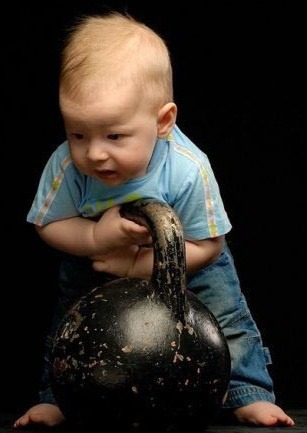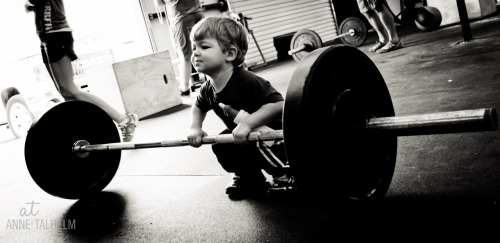 |
| Source |
That post was about having the physical ability to keep up with -- and enjoy -- your time with family. For this one, I want to turn that around. I want to talk about the impression you give others as you stay -- or don't stay -- physically fit and healthy.
With that visit as my inspiration, I'll focus only on the impression that you have on your own children. I'll leave the rest to you.
It is true in fitness the same way it is true in just about any aspect of life. Your greatest influence will be the influence you have on your children. You work to be a role model in how to treat others and their desire to learn. Being healthy and active should be a part of that too. Let your kids see you exercising. Make sure they realize it's an important thing that deserves time and energy. I view of fitness, although it really didn't come out until my mid-20's, was shaped by watching my Dad leave and come back from his regular runs and trying to keep up with my Mom's fast pace. Growing up seeing that wasn't just an example of how to keep moving, it shaped my reality.
 |
| Source |
Science Daily, Poor Role Models: Children Say Two-Thirds of Parents Do 'Almost No Physical Activity'
And just as you might expect, those kids who saw their parents as active and fit were themselves active and fit as well. That's a good foundation to work from. Better said, it's a particularly bad foundation for those kids who are shaped physically and emotionally with an inactive reality. This blog post from the NY Times is written by someone who had a very different perspective. Now, in her story basic fitness is just the tip of the iceberg. But still, you can sense the internal pain caused by parents who had health problems that they didn't manage correctly. Let's take a quick look:
In spite of being shorter and scrawnier than my classmates, I was eating calorie-free astronaut mystery powders and drinking diet sodas, which were the only staples in our kitchen. My dad was obsessed with his career in advertising and his fluctuating weight, which was fluctuating mostly in the wrong direction. Every new diet, no matter how stringent or odd, was the potential solution for his expanding waistline.That certainly isn't the reality where your children are raised -- or at least I hope not. Imagine being a young child raised by parents who struggled with weight but didn't see exercise and healthy food as the solution. Imagine not making that correlation until much later in life.
My mother, on the other hand, never understood what the big deal with food was and ate only one small meal a day while standing up and chatting on the phone. She had no interest in preparing food. Most of our meals consisted of my dad’s diet foods, a meal replacement shake, a frozen dinner, or a bagel or pizza in the car. We never had meals together as a family; in fact, we never ate sitting down. At home, we never used silverware or dishes, only plastic forks and paper plates. My mom loved the fact that in India they never used silverware at all. Of course, she missed the part that Indian families actually ate together and sat down while eating.
So, how is your child's fitness reality being shaped? What lenses will they see the fitness world through? And, what pictures will they have to look back on when they are older? Will your 18 year-old have a picture like this:
 |
| Source |
No comments:
Post a Comment